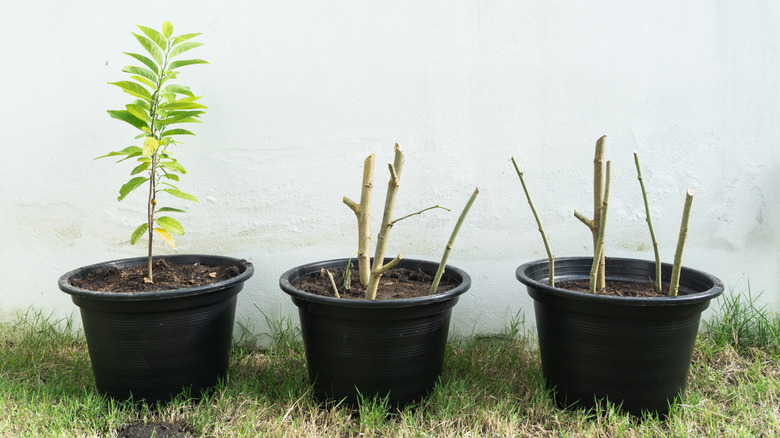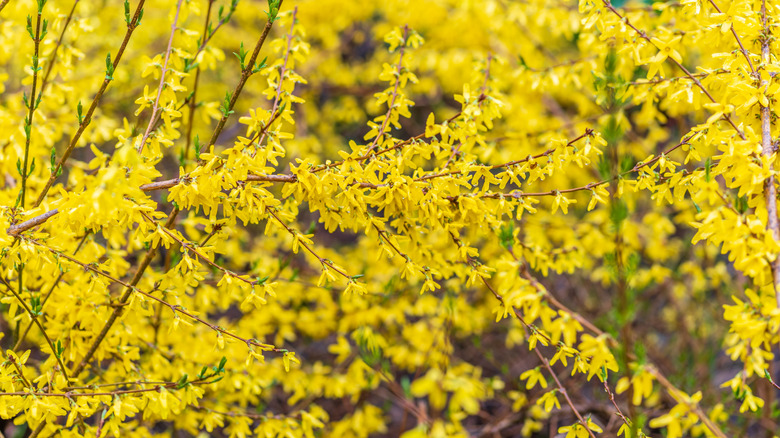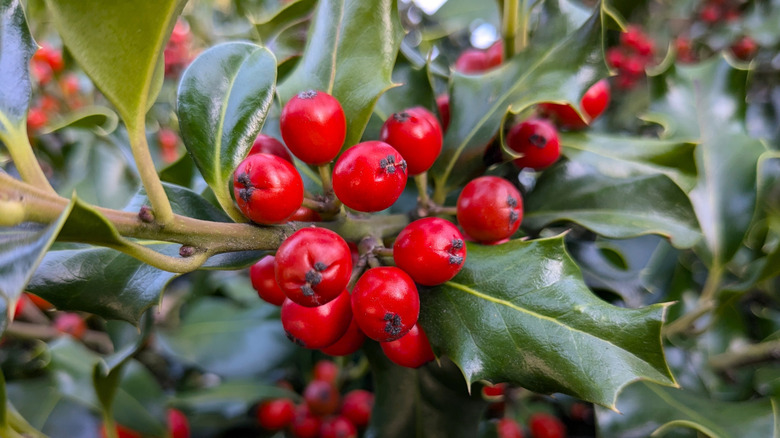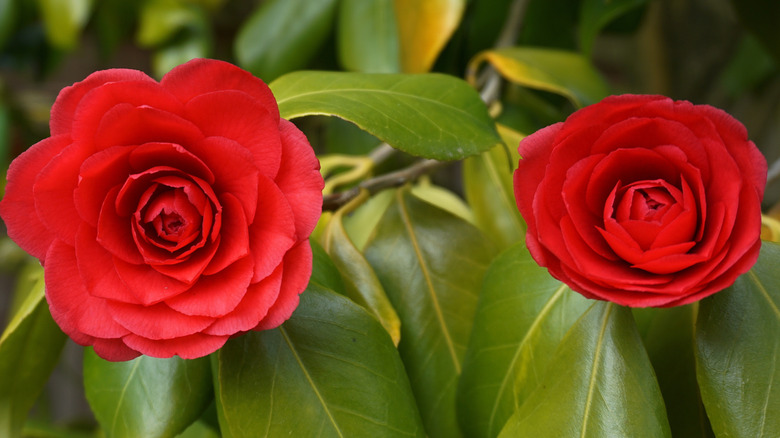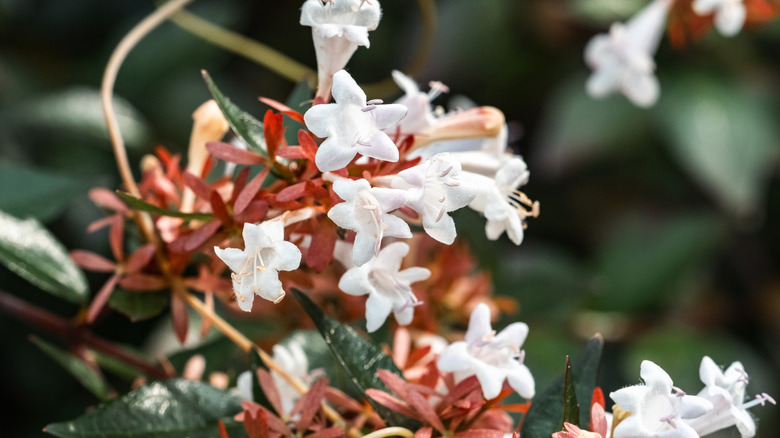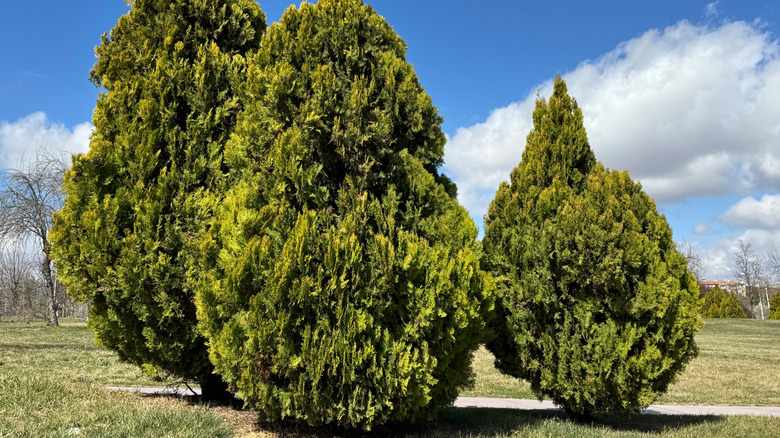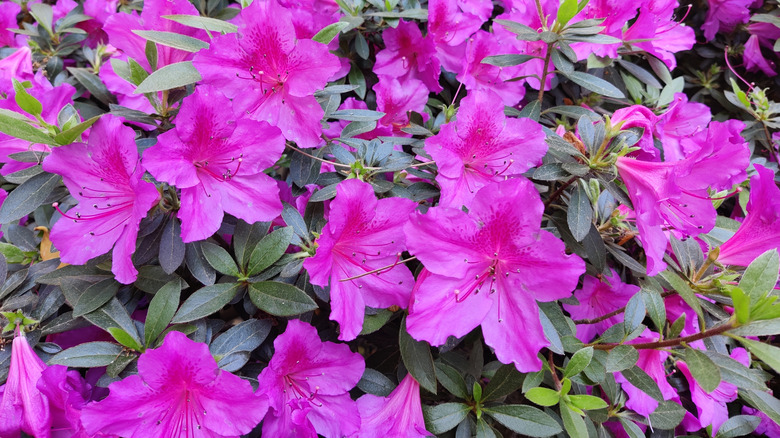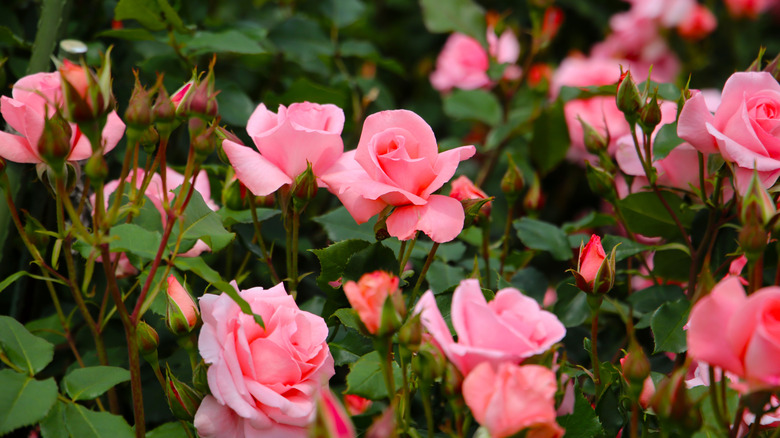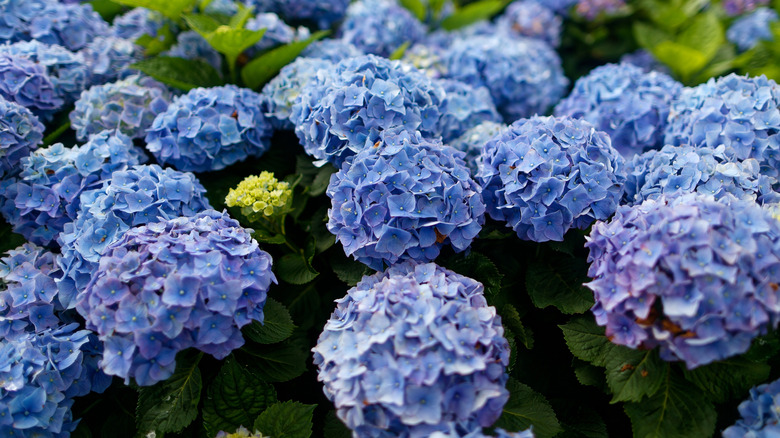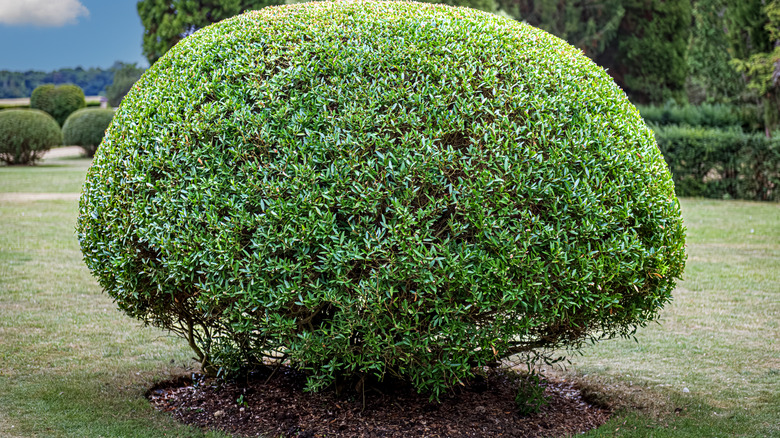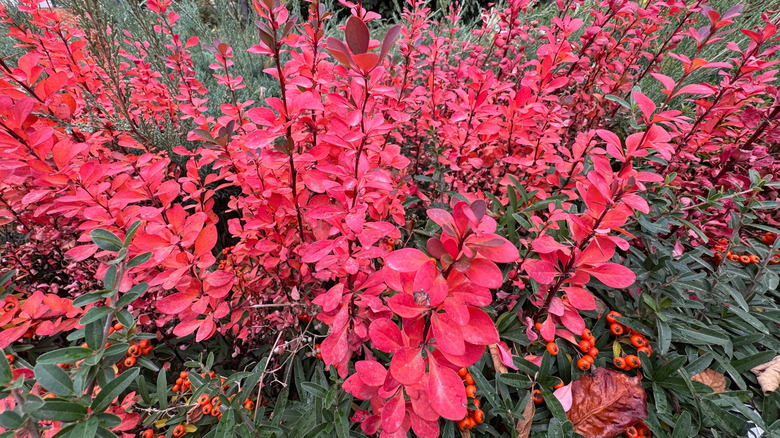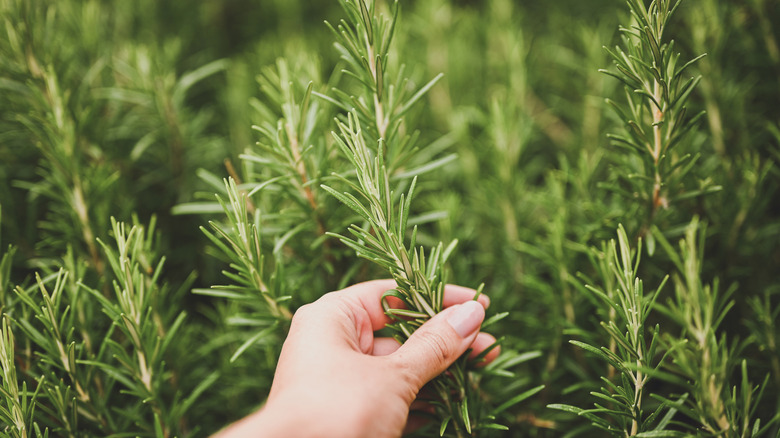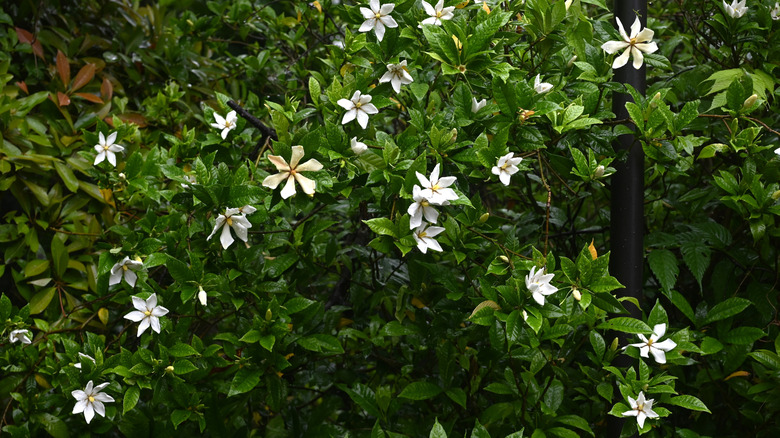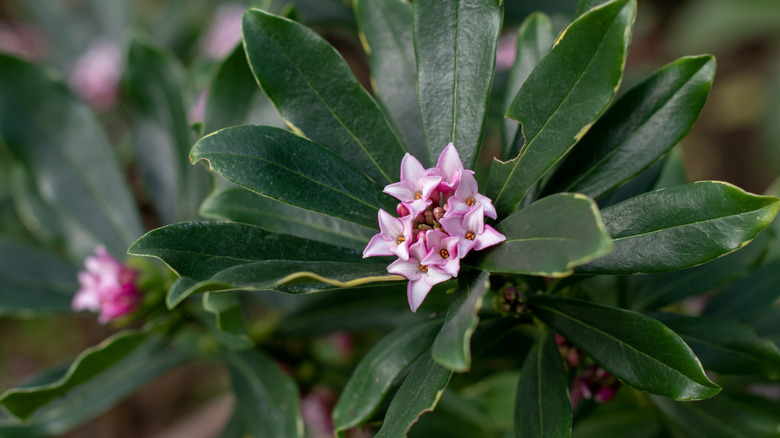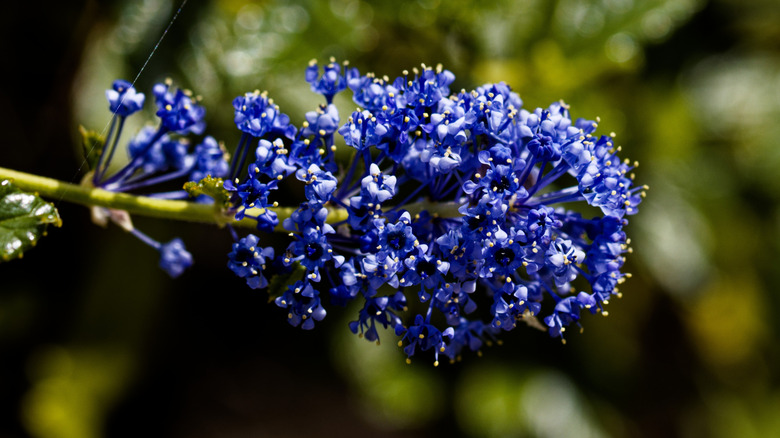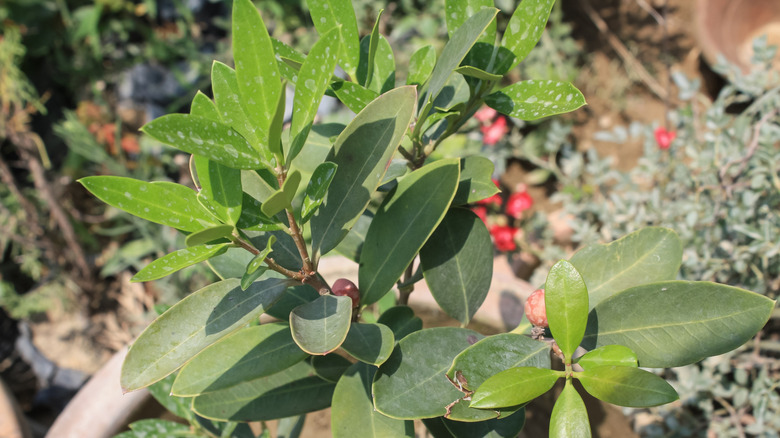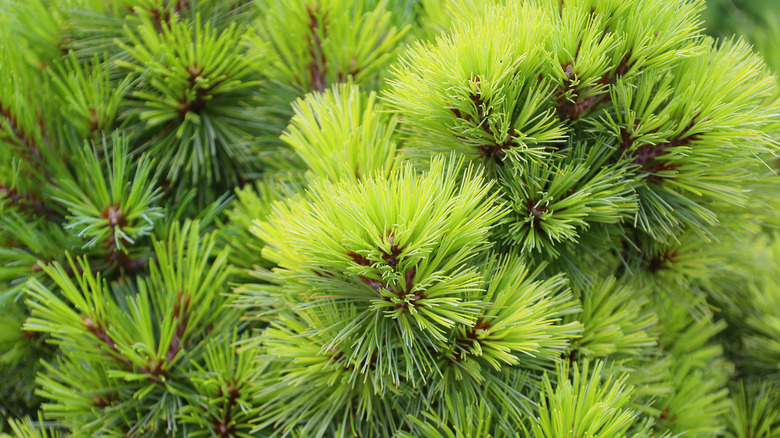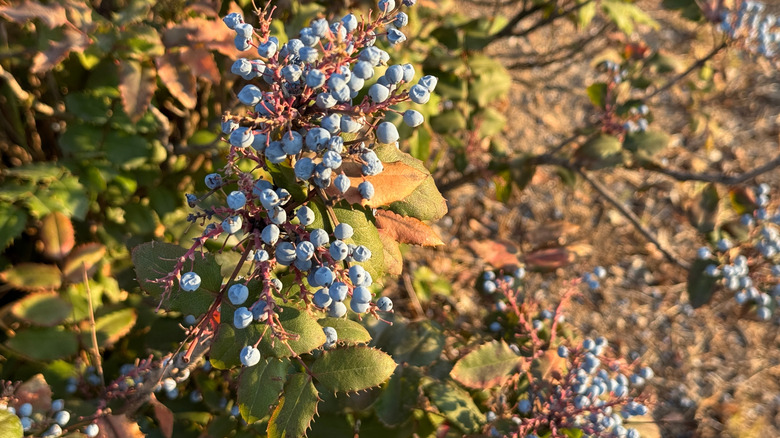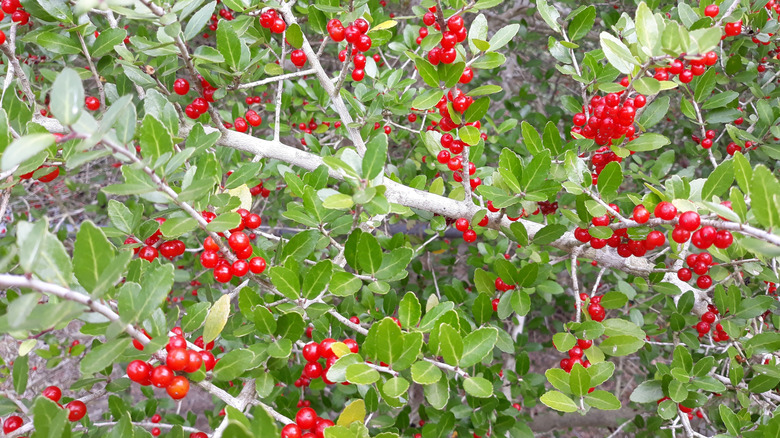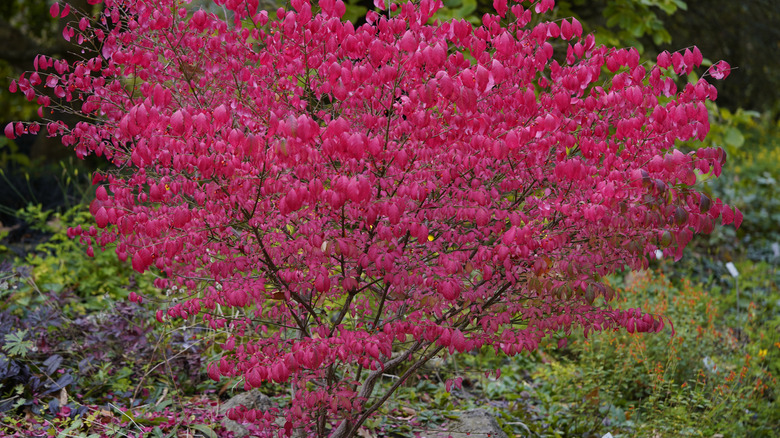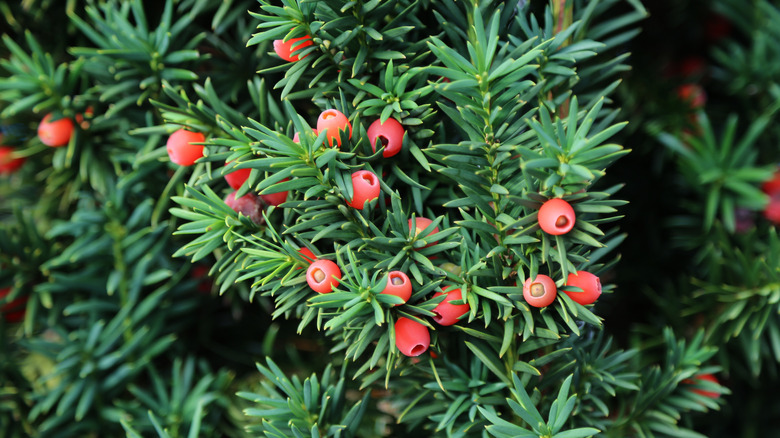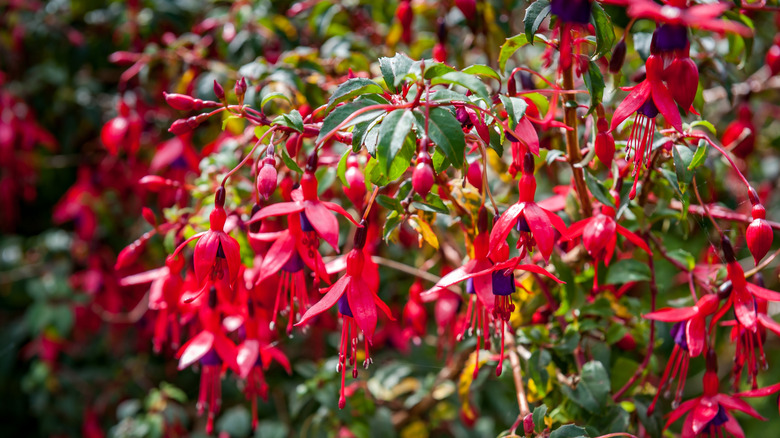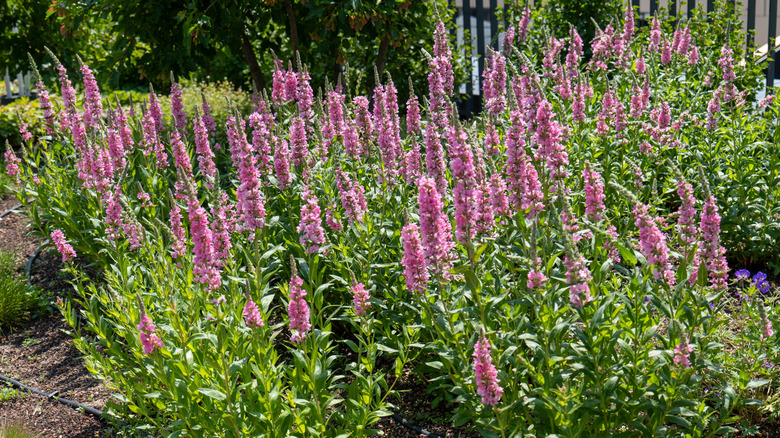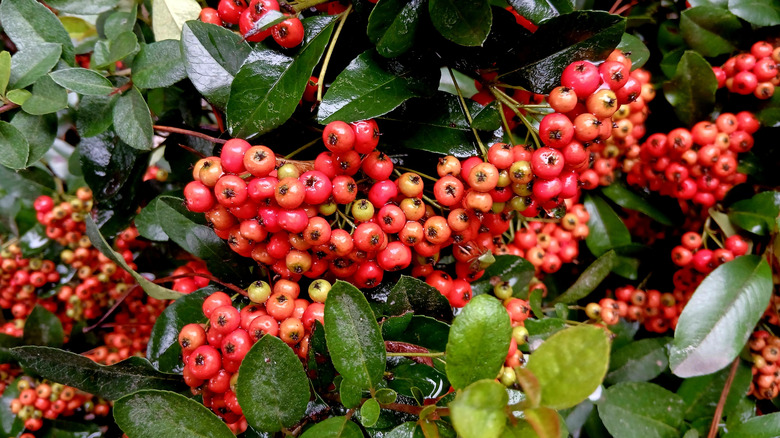23 Types Of Semi-Hardwood Cuttings To Propagate In The Fall
Whether you're grappling with a cherished plant that's nearing the end of its life or one that's become unsalvageable after a storm, you may have been tempted to save it somehow to preserve its legacy. Even without dire reasons, you might simply want to clone plants that have long brought joy with their beauty and usefulness. Since not all plants grow true to their parent through seeds or take several years to mature, propagating them through cuttings is a reliable alternative. Forsythia, holly, camellia, azalea, roses, and many other plants can be grown with semi-hardwood cuttings in the fall. However, check through the U.S. Patent and Trademark Office to ensure your plants aren't patented before propagating them.
Semi-hardwood, also called greenwood, refers to new wood that's still maturing, has green tips, and hasn't yet gone dormant. Usually, it becomes available for evergreen and deciduous shrubs and trees from mid-summer through early fall. Most plants root well from semi-hardwood cuttings because these stems contain abundant growth hormones and stored nutrients. However, exposing them to indoor heat during winter and applying rooting hormones can further improve rooting in these cases. Stick to sand-and-perlite or vermiculite-based potting mix for best results. With the basics established, here are the 23 types of semi-hardwood cuttings worth propagating in the fall.
Forsythia
Seeing Forsythia (Forsythia spp.) in bloom is a sure sign that spring has finally arrived. But if you're missing this spring harbinger in your garden, convince your gardening friends to share a 6-inch-long, semi-hardwood cutting from the latest seasonal growth — early fall is a great time for this. Make sure the cutting has mature leaves before planting it. Note that only a few forsythia hybrids can survive as far north as Zone 3; most are hardy in Zones 5 through 8. If you're concerned about their short blooming season, you can combine forsythias with other beautiful plants for greater impact.
English holly
Although English holly (Ilex aquifolium) can be propagated via seeds, they may deviate from the parent plant in their characteristics due to open pollination. To clone the original plant successfully, take a 6- to 7-inch-long semi-ripe cutting from it in the fall. Ensure it has a growing tip, while the stem is still soft and pliable. Transplant these cuttings after they've spent a year in a cold frame. Keep in mind that a male pollinator is needed for holly trees to produce fruit. Also, English holly is invasive in California, Alaska, Oregon, and Arlington, VA, and shouldn't be planted there.
Camellia
Besides layering, camellias (Camellia spp.) can be propagated from spring growth once it's about 80% woody in late summer or early fall, depending on your climate. Snip a 3- to 4-inch-long cutting and strip it of all leaves, save for three to divert resources to root development. For better results, remove the bark about one inch from the bottom to ensure greater cambial contact with the rooting compound. Mist the cuttings frequently to experience rooting in two months. Note: Some camellia varieties develop a popcorn-shaped callus, which is normal during root production.
Glossy abelia
Glossy abelias (Abelia x grandiflora) make one of the best hedges for privacy in your yard. But if you live in cold climates where this shrub fails to overwinter or simply want more plants, you can propagate it using cuttings. While softwood and hardwood cuttings are just as successful, you're more likely to grab semi-ripe cuttings in the fall. About ¼ inch below a leaf node, make a 6-inch-long cut on a woody stem with green tips and push them into a well-draining potting mix or compost. Keep the cuttings moist until roots form in about six weeks.
American arborvitae
American arborvitae (Thuja occidentalis) or northern white-cedar is a low-maintenance tree employed as an evergreen hedge or a specimen in foundation plantings. If deer tend to damage your tree in winter, save a few semi-hardwood cuttings to root indoors. Cuttings should be from the latest growth with the heel attached, and should be planted in a moist medium of pumice and peat moss after removing the lower leaves and the stem tips. Since arborvitae prefer humid conditions, wrap the pot in a plastic cover until the cuttings form roots.
Azalea
Azaleas (Rhododendron spp.) are gorgeous shrubs that attract pollinators, including hummingbirds, with their spring-blooming tubular flowers. If you have an evergreen or a semi-evergreen variety growing in your garden, you can easily propagate it through cuttings. Look for current-season growth that's nearly woody but is topped by new terminal buds and splice a 5-inch-long piece. After removing most of the leaves, place the cutting in a plastic bag and refrigerate it overnight. Although rooting hormones aren't necessary, you may dust them lightly on the wounded cutting for faster rooting. Roots usually develop within eight weeks.
Rose
In case you've missed the window on softwood cuttings, there's still time to propagate roses (Rosa spp.) in the fall using semi-hardwood cuttings. The ideal cutting length depends on the rose variety. For instance, miniature roses require a 4-inch-long cutting while hybrid tea roses require twice the length of 8 inches. Regardless, ensure all the cuttings have over four healthy leaf nodes. Use a perlite and coco coir concoction (2:1 ratio) to house the cuttings and keep it moist. Overwinter cuttings indoors or in a greenhouse until they root in about six weeks, then move them outside in spring.
Hydrangea
Like roses, hydrangeas can be propagated from softwood cuttings after flowering or from semi-hardwood cuttings taken early in fall. For the most success, look for shoots that didn't flower in the current season, hidden deep into the shrub, or make use of non-flowering side stems. Select shoots with tender tips and firm lower growth, cut 6- to 8-inch-long sections, and remove the lower leaves. You may additionally halve the top leaves for greater moisture retention. Insert the cuttings up to two nodes deep into damp vermiculite, and expect new roots in about two months.
Boxwood
Boxwood (Buxus spp.) plants, including American (B. sempervirens) and littleleaf (B. microphylla), are often prized as four-season, sculptural hedges around the landscape. Since boxwoods are prone to blight, it's wise to keep a few replacements ready. In autumn, snip a few, 6-inch-long semi-hardwood cuttings from the healthiest shoots and remove all leaves from the bottom half. After dabbing a rooting hormone, insert them in a moist sand and perlite mix. Keep at 70 to 75 degrees Fahrenheit in indirect sunlight and monitor for root growth in eight weeks.
Japanese barberry
Japanese barberry (Berberis thunbergii) is a highly ornamental shrub, well-liked for its yellow blooms, fall colors, and winter-persisting red berries. If you want more of this plant, early fall is a good time to get hold of semi-hardwood cuttings. A length of 6 inches is optimum and can be situated in a coarse-sand mix after removing the lower cluster of leaves. Maintain a temperature of about 75 degrees Fahrenheit, and expect roots to develop in six to eight weeks. Keep in mind that Japanese barberry is one of the most invasive shrubs on the East Coast and shouldn't be planted there.
Rosemary
Rosemary (Salvia rosmarinus) is prized for its edible, aromatic leaves, purple blooms, and ability to attract pollinators. So, when the mature specimens start to look tatty, you can clone them using cuttings. Although softwood cuttings taken right after flowering offer the best results, you still have a chance of successful rooting in the fall with semi-ripe cuttings. Choose a healthy stem, cut a 4-inch-long section with three leaf nodes, and plant it in a peat-perlite mix after removing the lower leaves. Supplement with grow lights if needed to encourage rooting within six weeks.
Cape jasmine
To infuse your garden with the sweet fragrance of creamy-white flowers of cape jasmine (Gardenia jasminoides), cut away a 4 to 6-inch-long woody stem with tender tips. Remove the lower leaves and insert the cutting about one inch deep into a mix of vermiculite and peat. To prevent gardenia cuttings from failing, be sure to place them in a highly humid environment. Alternatively, you can cover them with a plastic bag that doesn't touch the stems, and replace it daily to prevent mold. Cape jasmine cuttings usually develop roots in about two months and can be transplanted afterward.
Fragrant daphne
Fragrant daphne (Daphne odora) is prized for its rose-pink, sweetly scented blooms that open in mid to late winter, brightening an otherwise bleak landscape. Sadly, these winter shrubs, hardy in Zones 7 through 9, are short-lived. They're also expensive to replace since they're usually sold as grafted specimens. If there's a fragrant daphne you'd like to save, take a 6-inch-long semi-woody side shoot along with bark tissue from the main stem, known as a heel. Place the cuttings in a container filled with compost and perlite, and keep them in partial shade until they root.
Ceanothus
If you're growing an evergreen variety of ceanothus (Ceanothus spp.), like the blue blossom (C. thyrsiflorus), fall is the perfect time to propagate more plants. Keep in mind that these cuttings may take up to three years to flower. Choose a current season's side shoot that's just hardening up and pull it free of the main stem, while making sure a part of the old bark comes away too. This increases the chances of rooting, as the semi-ripe cuttings benefit from the high concentration of growth auxins in the old tissue.
Inkberry
Hardy in Zones 4 through 11, inkberry (Ilex glabra) is a standout addition to pollinator gardens, attracting various butterflies, bees, and birds to its blossoms, fruits, and foliage. If you wish to increase your plantings or convert them into an ornamental hedge and feel they aren't producing the necessary suckers, you can quicken the process by cutting 6-inch-long semi-hardwood cuttings in autumn. After applying a rooting hormone, plant the cuttings about one inch deep into the ground. The roots emerge within eight weeks.
Eastern white pine
Largely sold to home gardeners as Christmas trees, eastern white pines (Pinus strobus) also thrive in native gardens in the central-eastern U.S. region. They can serve as fast-growing shade trees that offer birds a valuable overwintering habitat. If you want to enhance your yard's wildlife value, grab a few 4-inch semi-hardwood cuttings off the latest growth flush toward the tail end of fall. Do note that cuttings taken from juvenile trees usually root more successfully. Keep the cuttings in a warm, moist environment, and they should root within 16 to 22 weeks.
Oregon grape holly
Oregon grape holly (Mahonia aquifolium) is mighty popular in Zones 5 to 8, providing four-season interest with golden-yellow blooms, bluish-purple berries, and evergreen foliage. Although it spreads slowly via rhizomes and self-seeding, you can also propagate it by taking cuttings in late fall. To ensure success, regularly mist the plants or wrap them in a plastic sheet to maintain a humid environment and keep temperatures at about 70 degrees Fahrenheit. Dabbing rooting hormones is equally essential to see roots within eight weeks.
Yaupon holly
Yaupon holly (Ilex vomitoria) trees, with their vibrant red berries suspended against green leaves, bring Christmas cheer to winter gardens. With thick twigs and evergreen foliage, they make excellent geometric hedges and windbreaks in Zones 7 to 9. To propagate more plants, take cuttings from the latest flush of growth while it's still maturing in late fall. Make sure to take more than your desired plantings and apply a rooting compound, as not all the cuttings will be successful. This is especially important for female trees because they're the only ones that bear fruit.
Euonymus
Broad-leaved evergreen varieties of Euonymus (Euonymus spp.) can be propagated in early fall. Before taking such a step, make sure the plant isn't invasive in your state, especially if it's the winter creeper (E. fortunei). From the still-maturing, healthy shoot, take out a 4 to 6-inch-long section about ¼ inch under the leaf node. Remove the stem tip as well as the majority of leaves, leaving only four. After applying a rooting compound, pot up the cuttings and check for roots in eight weeks. Successful cuttings should be grown indoors for at least a year before transplanting in the following spring.
Yew
To produce more clones of an existing yew (Taxus spp.) tree or shrub in your yard, take semi-hardwood cuttings in early fall. Cuttings rooted around this time generally have a high success rate, though, as a precautionary measure, you should take twice as many as desired. Make an angled cut on the current season's growth down to 6 inches, including the terminal bud. Remove needles from the lower half and pot the cuttings after applying a strong rooting hormone in a sterile medium, either in individual pots or along the edges of a large container.
Fuchsia
Whether trained as a tree, cascading down a hanging basket, or placed in perennial beds, Fuchsia (Fuchsia spp.) is an eye-catcher for its gorgeous flowers and the pollinators it attracts, especially hummingbirds. If you'd like to see more of this versatile specimen, you still have time to get a hold of several cuttings in the autumn before the wood grows too hard and becomes difficult to root. Take a semi-ripe, non-budding shoot and clip a section with two pairs of mature leaves. Although rooting hormones aren't necessary, using one with a fungicide should help prevent damping-off.
Penstemon
Bearded tongue or penstemon (Penstemon spp.) is typically propagated in early summer for a wave of flowers before the growing season ends. However, early fall — or later, if the plant produces new growth — is still suitable for propagation, which is great if you live up north. To propagate, take a 2- to 4-inch semi-ripe cutting from a green-tipped, woody-based branch. Remove all the foliage on the bottom half of the cutting and slice any remaining big leaves in half to reduce water loss. Plant the cutting in a heated bed and wait until roots develop.
Firethorn
While some find firethorns (Pyracantha spp.) objectionable for the unpleasant smell emanating from their flowers, others appreciate them for attracting birds to the garden. These shrubs produce abundant red berries throughout winter, providing food when other sources are scarce. In addition, their fast growth and spiny branches make them effective natural screens. If you wish to replace a firethorn past its prime, collect 5- to 6-inch-long, semi-ripe cuttings from it during autumn. Place the cuttings in a cold frame until roots develop in about six weeks.
